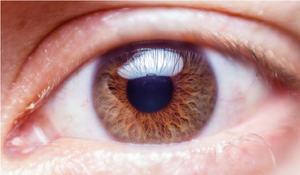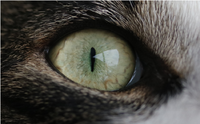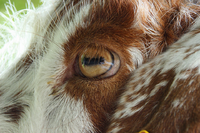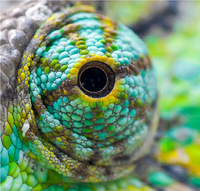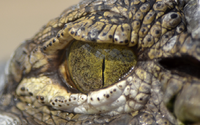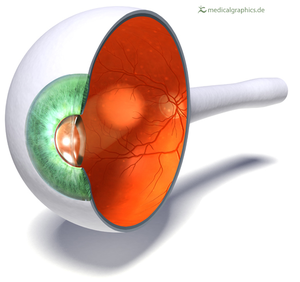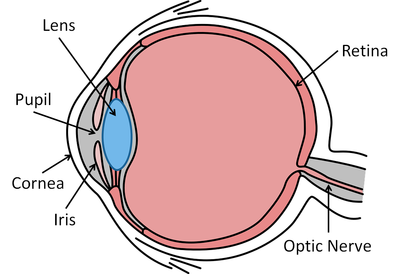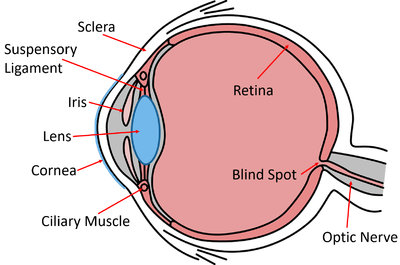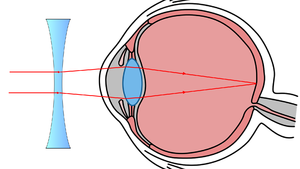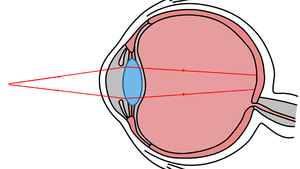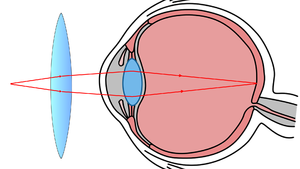Difference between revisions of "Eyes"
| Line 134: | Line 134: | ||
:[https://www.amazon.co.uk/gp/product/1782945954/ref=as_li_tl?ie=UTF8&camp=1634&creative=6738&creativeASIN=1782945954&linkCode=as2&tag=nrjc-21&linkId=100574c08fbbb64318256eb79ed61a76 ''Eyes, pages 195, 196, 198, 199, GCSE Biology, CGP, AQA ''] | :[https://www.amazon.co.uk/gp/product/1782945954/ref=as_li_tl?ie=UTF8&camp=1634&creative=6738&creativeASIN=1782945954&linkCode=as2&tag=nrjc-21&linkId=100574c08fbbb64318256eb79ed61a76 ''Eyes, pages 195, 196, 198, 199, GCSE Biology, CGP, AQA ''] | ||
:[https://www.amazon.co.uk/gp/product/1782945563/ref=as_li_tl?ie=UTF8&camp=1634&creative=6738&creativeASIN=1782945563&linkCode=as2&tag=nrjc-21&linkId=9a1d023a374038e6072f33c4f3cf808b ''Eyes, pages 70, 71, GCSE Biology; The Revision Guide, CGP, AQA ''] | :[https://www.amazon.co.uk/gp/product/1782945563/ref=as_li_tl?ie=UTF8&camp=1634&creative=6738&creativeASIN=1782945563&linkCode=as2&tag=nrjc-21&linkId=9a1d023a374038e6072f33c4f3cf808b ''Eyes, pages 70, 71, GCSE Biology; The Revision Guide, CGP, AQA ''] | ||
| + | |||
| + | ====Edexcel==== | ||
| + | |||
| + | :[https://www.amazon.co.uk/gp/product/1292120207/ref=as_li_tl?ie=UTF8&camp=1634&creative=6738&creativeASIN=1292120207&linkCode=as2&tag=nrjc-21&linkId=22455ff53961978667722edaa64c0be5 ''Eye, pages 44-45, GCSE Biology, Pearson, Edexcel ''] | ||
| + | :[https://www.amazon.co.uk/gp/product/1782946748/ref=as_li_tl?ie=UTF8&camp=1634&creative=6738&creativeASIN=1782946748&linkCode=as2&tag=nrjc-21&linkId=a4f0348fc37d0ba1bb52d27f8679581f ''Eyes, page 30, GCSE Biology; The Revision Guide, CGP, Edexcel ''] | ||
| + | :[https://www.amazon.co.uk/gp/product/1782948120/ref=as_li_tl?ie=UTF8&camp=1634&creative=6738&creativeASIN=1782948120&linkCode=as2&tag=nrjc-21&linkId=dedef775c6a43dbb0a609441525adac0 ''Eyes, pages 78-80, GCSE Biology, CGP, Edexcel ''] | ||
Revision as of 16:09, 19 November 2019
Contents
Key Stage 1
Meaning
Eyes are the part of the body that allows us to see.
About Eyes
- Most animals have only two eyes but some have more and some have no eyes at all.
- Eyes allow us to see colour.
- Eyelids blink a couple of times every minute to keep our eyes moist.
- Eyelashes are there to stop dust getting in our eyes.
- A person whose eyes don't see is called 'blind'.
- Your eyes can be damaged and make you blind if you stare at The Sun.
Examples
| A cat eye. | The eye of a goat. |
| A chamelion's eye. | A crocodile eye. |
Key Stage 2
Meaning
Eyes are the part of the body that allows us to see.
About Eyes
- Most animals have only two eyes but some have more and some have no eyes at all.
- Eyes allow us to see colour.
- Eyelids blink a couple of times every minute to keep our eyes moist.
- Eyelashes are there to stop dust getting in our eyes.
- A person whose eyes don't see is called 'blind'.
- Your eyes can be damaged and make you blind if you stare at The Sun.
Key Stage 3
Meaning
The eyes are a pair of sensory organs which allow us to see.
About Human Eyes
- The eye is made of several parts:
- Retina - Detects light.
- Optic Nerve - Sends electrical signals from the eye to the brain.
- Lens - Focuses the light onto the retina.
- Iris - The coloured part of the eye.
- Pupil - The hole in the iris that allows light into the eye.
- Cornea - The outer protective layer of the eye.
| A diagram of the eye. |
Focusing Images
- The eye uses a lens to focus an image on the retina.
- When the lens does not work well enough people can use glasses.
| The lens refracts the rays of light to form an image of the object. |
Key Stage 4
Meaning
The eyes are a pair of sensory organs containing receptor cells which can detect light.
About Human Eyes
- The eye is made of several parts:
- Retina - Detects light.
- Optic Nerve - Sends electrical signals from the eye to the brain.
- Lens - Focuses the light onto the retina.
- Iris - The coloured part of the eye.
- Pupil - The hole in the iris that allows light into the eye.
- Cornea - The outer protective layer of the eye.
- Sclera - A protective layer around the eye (the white area around the eye).
- Blind Spot - A point on the back of the eye without any receptor cells to detect light.
- Suspensory Ligaments - Tissue which connects the lens to the ciliary muscles.
- Ciliary Muscles - Muscles which can contract to squeeze the lens and relax to allow the lens to flatten. This is how the lens in the eye focusses light at different distances.
| A diagram of the eye. |
Defects of the Eye
- The eye uses a lens to focus an image on the retina.
- When the lens does not work well enough people require corrective lenses.
| The lens in the eye of a person with myopia focusses the light from distant objects in front of the retina creating a blurred image. | A myopic person can place a concave lens in front of the eye to correct their vision. |
| The lens in the eye of a person with hyperopia focusses the light in behind the retina creating a blurred image. | A hyperopic person can place a convex lens in front of the eye to correct their vision. |
Beyond the Curriculum
References
AQA
- Eye, page 182, GCSE Biology; Student Book, Collins, AQA
- Eye, pages 140-2, GCSE Biology, Hodder, AQA
- Eye; defects, page 186, GCSE Biology; Student Book, Collins, AQA
- Eyes, pages 1, GCSE Combined Science Trilogy 2, Hodder, AQA
- Eyes, pages 154-157, GCSE Biology; Third Edition, Oxford University Press, AQA
- Eyes, pages 195, 196, 198, 199, GCSE Biology, CGP, AQA
- Eyes, pages 70, 71, GCSE Biology; The Revision Guide, CGP, AQA
